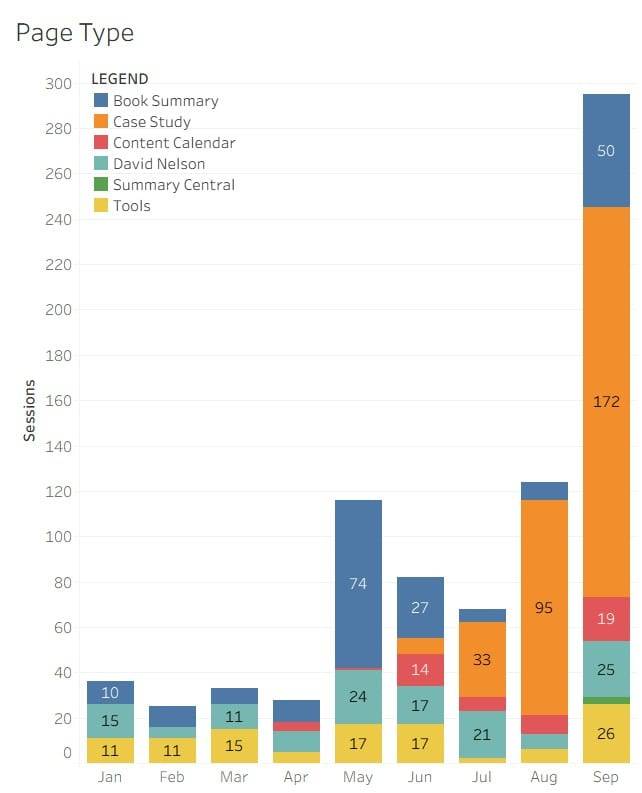Website analytics are only as good as the story they tell. If your dashboard just shows ‘posts’ and ‘pages,’ you’re missing the real insights about which content formats actually win. While that may be technically accurate, it isn’t particularly helpful when you want to evaluate which parts of your content strategy are actually working.
That’s where categorizing your pages by type comes in. Instead of treating everything as a “post” or “page,” you can create meaningful groups that reflect your actual content strategy. For my website, this includes book summaries, tools, case studies, and more. This makes your analytics far more actionable.
Example: Understanding Content Performance with Page Types
Take a look at the chart below:

At first glance, this view of traffic by page type makes it obvious which categories are performing. For my site, Case Studies have become the breakout performers, driving consistent growth in sessions throughout the year.
Without this level of categorization, I’d just see a long list of URLs making it much harder to recognize that case studies are pulling in the most readers.
Going Beyond Traffic: Measuring Engagement
Traffic tells only part of the story. That’s why I also look at average session duration by page type:

Here, the data shows that people are spending more time on my case study pages compared to other types of content. That makes sense, these are longer form, research driven posts. But the key takeaway is that my readers are actually engaging with them, not just clicking in and bouncing out.
This insight helps me decide where to invest more time or at least confirm my reader’s interests.
Why This Matters for Marketers
Categorizing your content into meaningful page types unlocks three major benefits:
- Clearer performance insights , You’ll quickly see which content types drive the most traffic.
- Better engagement metrics , You can measure not just visits, but whether people are actually engaging with the format.
- Smarter resource allocation , Instead of guessing, you’ll know exactly which kinds of content deserve more of your effort.
The Bottom Line
If you only look at your website through the default “posts” and “pages” lens, you’re missing the real story. By categorizing your content by page type, you can easily spot which areas are winning, how readers engage differently with each format, and where to focus next.
For me, the lesson was clear: case studies are my most valuable content type right now. And that clarity only came from taking the extra step to classify my pages in a way that actually reflects my content strategy.
If you haven’t looked at your website analytics this way before, start by grouping your content into a handful of meaningful page types. It’s a simple step that can reveal surprising insights about your audience and your strategy.
